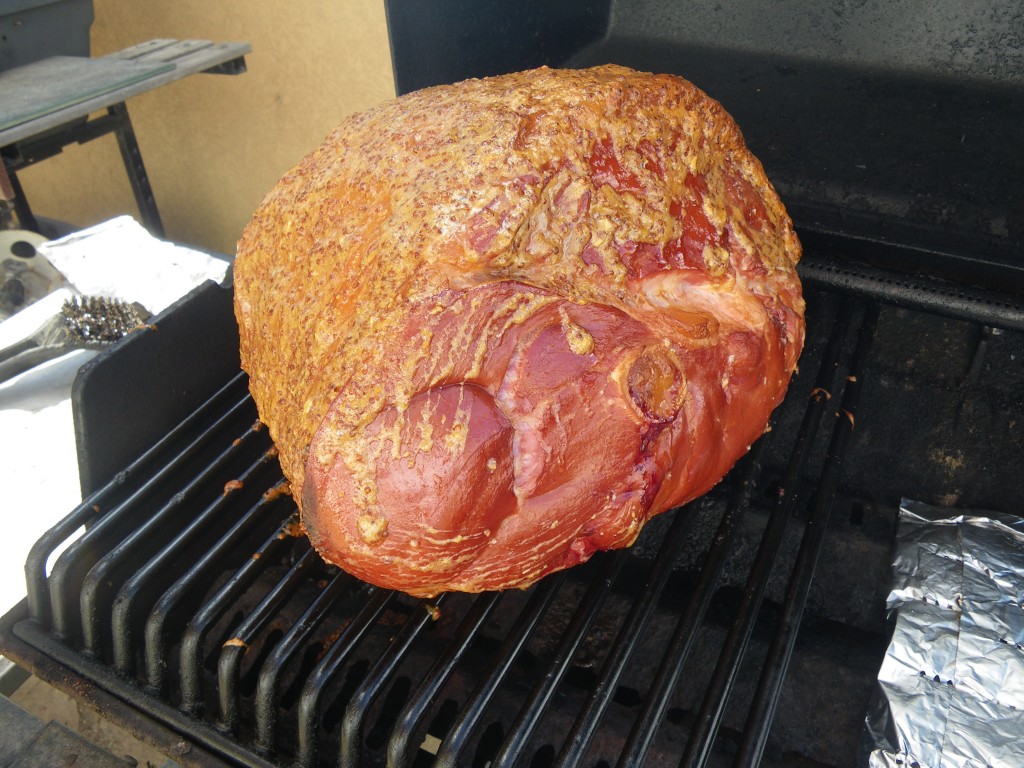For the last few years we’ve been curing our own Easter ham with more or less an entire leg of pork.
The primal cut of pork known as the leg is separated from the loin and belly by sawing through the middle of the pelvic bone. The section of the pelvis that is left on the loin is called the pin bone. The section on the leg is the haitch bone. To remove the haitch bone you have to follow its frustrating curves with your knife until you expose the ball joint where the leg meets the pelvis. Cut through this joint.
Next the skin is removed in one large sheet.
What remains of the leg typically weighs about 15 lbs, though obviously this depends on the animal. I brine the leg for about a week, a half pound per day, though I’ve been having some…
Problems with Brine Penetration
Even working from Ruhlman’s recipes for ham, I always (always!) have problems with brine penetration. With any ham larger than a hock, it seems that no matter how long I leave the meat in the brine, the brine can’t reach the middle of the cut, closest to the bone. The cheap and simple solution is to buy a syringe and inject brine to the innermost regions of the ham.
Anyways.
After curing I leave the ham in the fridge uncovered for a day so that the surface can dry and form a pellicle. On Easter morning I smoke the ham on my barbecue. It takes about five hours to come to temperature. Usually for a roast this size I would expect at least ten degrees of carry-over cooking, but since the smoking temperature is so low, around 225°F, it’s typically closer to five degrees.
Grocery-store hams just don’t compare. Texturally they are very uniform, and kind of resemble a soft rubber. Flavour-wise, though most grocery-store hams are naturally smoked, they only taste of salt and sugar. The home-made ham is sinuous, but incredibly tender; since it’s a large cut, with the bones still in place, it actually tastes of pork; and the smoke lends a warm campfire complexity to that natural taste.
Even with eight people dining, a whole leg is overkill. Thankfully we have ways of dealing with leftovers.
Homemade Ham
Ingredients
- 4 L cold water
- 350 g kosher salt
- 350 g brown sugar
- 42 g FS Cure #1 (5% sodium nitrite)
- juniper
- garlic
- rosemary
- black pepper
- bay

